Abstract 2/2015
Table of content
Aleksandra Romanowska,Kazimierz Jamroz – Largeshopping centers – usual traffic generators or sources of transport problems?
Urszula Duda – Functional analysis of kiss and ride zone at the Main Bus Station in Cracow
Andrzej Chyba, Wiesław Starowicz – Punctuality of vehicles of the MPK S.A. in Cracow operating as urban collective transport between 1997 and 2013
Zofia Bryniarska – Development of transport services in suburban zone of Cracow
Marek Bauer – Studies on tolerance for punctual departures in urban transport on the example of Kielce
Abstracts
Aleksandra Romanowska, Kazimierz Jamroz
Largeshopping centers – usual traffic generators or sources of transport problems?
Abstract: The article presents essential information on functioning of large-sized shopping centers in cities, published in Polish and world literature as well as research carried out in Poland and in the foreign countries. Presented issues allow to get acquainted with basic knowledge on customers behavior, question’s related to determining parking space, characteristics of the traffic generated by shopping centers and its impact on the adjacent transportation system.
Keywords: Shopping centers, trip generators, traffic generators, transport system, transportation problems
Urszula Duda
Functional analysis of kiss and ride zone at the Main Bus Station in Cracow
Abstract: The article presents following phases of the analysis of functioning of the kiss and ride system which was implemented at the end of 2013 in Cracow and has been functioning continuously after small logistic modifications. It constitutes one of the transport system of the city which improves and provides exchange of passengers within the limits of bigger traffic generators. Functioning of kiss and ride system has been examined on the example of kiss and ride zone organized nearby the Main Bus Station (MDA).The analysis was mainly focused on its proper use, but also on functional and organizational efficiency. The research was aimed to identify drivers behavior in the reference to the accuracy and compliance with the rules that are in force in this area. During observations period of stopping and parking in the zone were registered as well as appraisal of drivers’ behavior has been conducted. In cases of “behaviors against the rules” – type of irregularity was estimated (f.e. blocking the K + R lane, parking outside the K + R lane). Following stages of analysis with a description of the organization and labeling of the selected kiss and ride zone. Detailed conclusions of the researches and observed problems have been presented.
Keywords: kiss and ride, K+R, travel behaviors, interchange nodes
Andrzej Chyba, Wiesław Starowicz
Punctuality of vehicles of the MPK S.A. in Cracow operating as urban collective transport between 1997 and 2013
Abstract: The article contains analysis of punctuality of vehicles of the MPK S.A. in Cracow. The analysis includes rides of trams and buses. Information gathered during observations at the bus’s and tram’s stops from 1997 till 2013 is on the basis of this analysis. Only 2006 year is not covered with data. From 1997 to 2005 observations were conducted in the framework of the SKUT system, further observations were continued by the staff of public transport management company – currently it is the ZIKiT. In the first part of the article the matter of transport researches in the framework of the SKUT system as well as by ZIKiT has been discussed. This issue has been presented in details since – as the further analysis of punctuality will prove: the change of observations’ methodology of running vehicles resulted in sudden change of indicators’ values. Then analysis of punctuality of vehicles including two parts was presented. In the first part variability of punctuality indicators’ and in the second part – shaping of average punctuality’ deviation d were presented. Values of punctuality indicators have been determined for absolute punctuality (d = 0) and taking under consideration determined range of tolerance <-2, 1>. Average deviations of punctuality were calculated firstly for all observed vehicles’ rides and further only for delayed rides. Calculations of punctuality’ indicators were conducted for the period of a year. Apart from calculation for all vehicles also separate calculations for trams and buses were conducted as well separately for working days as well as for weekends. Variability of indicators’ values and average deviations have been illustrated on the diagrams. Completion of above analysis is data concerning changes in number of buses’ and trams’ rides included in the transport observations. The article indicates that selection of dataset used for calculation of punctuality indicators and especially methodology of transport observations are of significant impact on the gathered results. Especially important seems to be conducting observations without informing a carrier.
Keywords: passenger transport, collective transport, punctuality, transport quality
Zofia Bryniarska
Development of transport services in suburban zone of Cracow
Abstarct: Passenger transport services in Cracow suburban area have been and still are very significant not only for Cracow residents but for people working or living in suburban area. Currently, the competences of public transport organizer within this area, according to agreements between city and every commune/municipality, belong to the municipal company (ZIKiT). Such solution is very functional and helps to integrate communication in the area while municipalities (gminy) are jointly responsible financially for the volume and framework of offered services. The organization of transport services in suburban area and number of transport lines providing services for inhabitants of all communes (gminy) has been presented in the article. The transportation offer has been characterized in terms of first bus stops, where lines start their running, number of rides, size and comfort of buses operating on lines. The volume of transportation work has been defined on the base of the total number of conveyed passengers as well as with reference to shares of passengers travelling only within area of the city, transferring to communes/municipalities or travelling only within area of communes. Characteristics includes also volume of exploitation work expressed in vehicle-kilometers and vehicle-hours. There were also presented coefficients characterizing transport services such as: average distance of passenger’s travel, average speed and coefficient of line productivity. Distribution of number of passengers in day hours has been discussed. All mentioned above analyses have been carried out for all types of weekdays (a typical working day, Saturday, Sunday). Additionally comparisons between current state and values of public transport services observed in 2009 have been made.
Keywords: public transport, bus transport service, suburban zone
Marek Bauer
Studies on tolerance for punctual departures in urban transport on the example of Kielce
Abstract: Researches onpunctuality of public transport in Polish cities are conducted relatively frequently. They usually refer to significance and current evaluation of punctuality although discussions on the substance and considering punctuality are conducted uncommonly. This article presents an issue of unstable expectations of passengers as far as punctuality of public transport depending on the phase of the journey. It is underlined that departures stepped-up and delayed (in reference to the timetable) are considered as punctual. Further methodology of questionnaire on punctual departures is discussed and then results of researches conducted in Kielce are presented. It is important that respondents had presented maximal delay and advancing in reference to the specific line they intended to continue a journey. Basic part of the article consists on the frequency analysis of urban public transport use and subjective evaluation of punctuality as well as journey motivation as far as changes of punctual departures perception. Results of analysis have proved big diversity of punctual departures perception. It may be used during planning phase of transport services, including timetables. Presented methodology of questionnaire’ researches may be applied successfully in other cities. It is also possible to extend scope of factors determining motives of choice of the specific line; frequency of its running or expectations as far as comfort of journey.
Keywords: public transport, tolerance level, urban transport, public transport

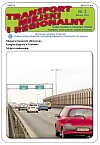 SITK RP
SITK RP 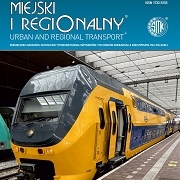 SITK RP
SITK RP 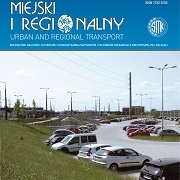 SITK RP
SITK RP 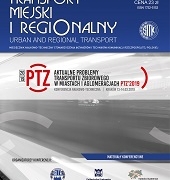
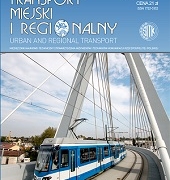
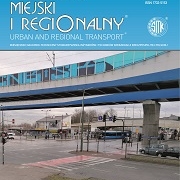 SITK
SITK 
 SITK RP
SITK RP SITK RP
SITK RP